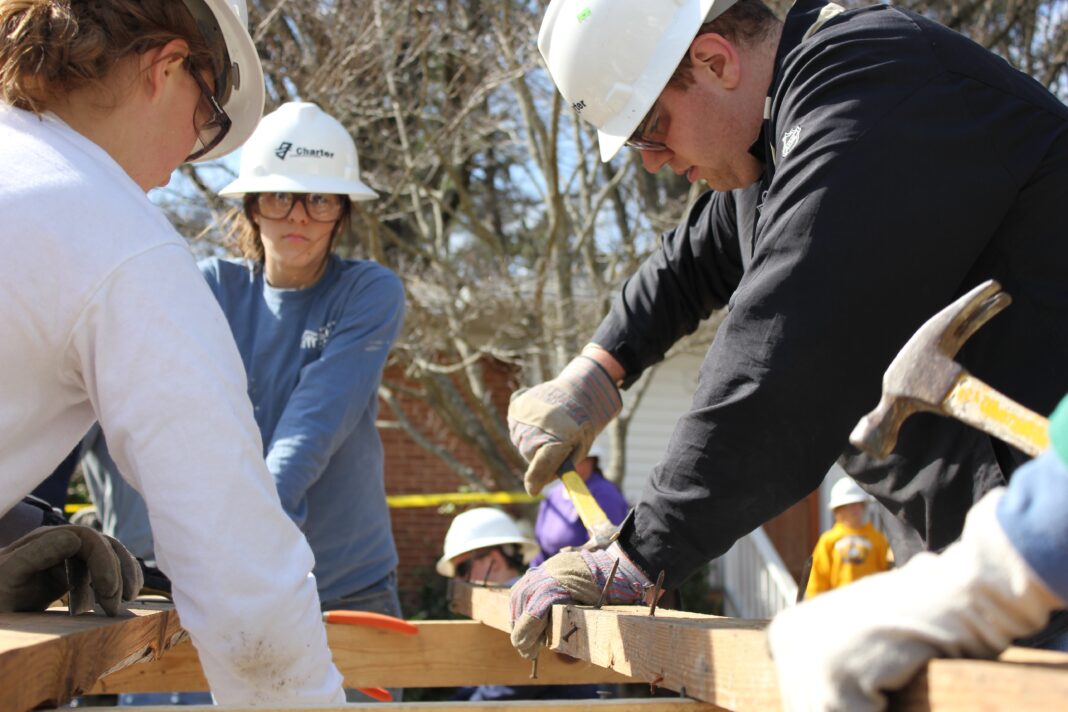Every step of the way, to everyone around us, we should be asking the question, what are you building? What are you building directly, or helping other people to build, or teaching other people to build, or taking care of people who are building? If the work you’re doing isn’t either leading to something being built or taking care of people directly, we’ve failed you, and we need to get you into a position, an occupation, a career where you can contribute to building. There are always outstanding people in even the most broken systems—we need to get all the talent we can on the biggest problems we have, and on building the answers to those problems.
–Mark Andreessen
Going on several years now, my friends and colleagues have been enthusiastically discussing It’s Time to Build by entrepreneur Mark Andreessen. Although the famed venture capitalist wrote this essay at the beginning of the pandemic, its arguments are no less relevant today. It remains an excellent challenge, a call to action that should spark our creative imaginations.
As Andreessen points out, there are as many creative ways to build as there are problems to solve and talented people to solve them. Many of us may not realize we are builders and entrepreneurs, but each of us is building something. For example, consider how you give and serve in small ways within your family. If you are a parent, you are meaningfully contributing to building the next generation.
If you are the kind of person who offers simple everyday kindness to others, you are building community and societal trust, an important counterweight in a time of polarization and outrage. Perhaps you work in the for-profit world where you indirectly or directly create products or services that serve people’s needs or improve their lives. Or you might in some way support the work of nonprofits because of your discomfort with settling for “the way things are.”
Nonprofit Innovators and Builders
I have a special place in my heart for nonprofits. Almost everyone has, in one way or another, been touched by their work. Nonprofits provide some of the greatest gifts to the world and take on some of its hardest problems. Take the example of St. Benedict’s Prep School, a small but mighty 100-year-old private school in New Jersey that has been featured on 60 Minutes and in a PBS documentary. These social entrepreneurs have transformed the educational experience by creating a student-run school. Yes, a student-run school; that’s not a typo. Through bold experiments, bottom-up empowerment, and listening to the needs of stakeholders, the school’s dedicated leadership has created a novel approach to teaching at-risk young men that meaningfully and measurably changes lives.
Education-focused nonprofits such as St. Benedict’s help break cycles of ignorance and poverty. They are building people up. Other nonprofits work to ease hunger, conserve nature and wildlife, or fight injustice. Still others provide healing by funding medical research or offering recovery programs, mental health counseling or medical care. Arts programs not only educate but lift the human spirit.
There are thousands of nonprofits whose work in some way alleviates the suffering of the more than 648 million people who live below the international poverty line struggling to fulfill their most basic needs like health, education, and access to water and sanitation. Others aim to free the approximately 24.9 million people in forced labor, 4.8 million of whom are in forced sexual exploitation.
The stakes are high. At the end of the day, billions depend in some way on nonprofits.
More Than Passion and Good Intentions
But tackling social problems is really hard work. And it can be murky: Finding effective solutions and measuring success are often very difficult. If you generously donate to a nonprofit, you want your gift to matter, to make a difference. But how do you know if your money is having an impact?
There is often a fog of uncertainty surrounding philanthropic outcomes and priorities. As “The 7 Habits of Highly Effective People” author Stephen Covey wrote, “If the ladder is not leaning against the right wall, every step we take just gets us to the wrong place faster.” How can we know if we are truly making a difference? Many nonprofit professionals bring plenty of heart to their jobs and are impressively generous but describe feeling overworked, underfunded and spread too thin. Sometimes people experience burnout. And some say that despite their hard work, they only see limited results.
Generosity and good intentions are necessary, but not sufficient. In the same way that the building of a new home requires an architect’s blueprint, nonprofits need clarity regarding their vision (why) and an intentional path to achieve it (how). Their thinking should be transparent and hold up under scrutiny. For example, let’s imagine that a team at affordable housing nonprofit Habitat for Humanity has two ways of defining a problem:
- How can we build the maximum number of shelters efficiently and cheaply to reduce the number of homeless people? Or…
- How can we eradicate substandard poverty housing worldwide, but in a way that honors people’s dignity and empowers them to participate, build equity and credit, and contribute to community life?
Which of the above is the better question? If the Habitat team addressed question #1, they would likely focus on finding the best way to get donations and hire construction companies to build housing or rentals for low-income residents.
But if Habitat is interested in transforming lives rather than just providing a one-time handout, then the second question is the one the leadership team should be trying to answer. That’s just what the organization did, coming to the conclusion that when Habitat homeowners put “sweat equity” hours into building their home, and when they pay a monthly mortgage (in this case, into Habitat’s revolving fund, which helps build the next house for another family) they end up having a personal stake in their housing that raises their level of commitment.
As Habitat’s co-founder, Millard Fuller, writes in his 1995 book, A Simple Decent Place to Live, it’s about “much more than just sheltering people. It’s what it does for people on the inside. It’s that intangible quality of hope.” And more broadly, as the future homeowner’s family and community work together to build their home, what they accomplish promotes healing, self-sufficiency and community.
Glancing back at those two questions again, what if no Habitat team members ever asked the second, far better question? The leadership team might have veered off course and missed an opportunity to identify the strategies and solutions that best advance its mission. In philanthropy, unfortunately, this happens a lot. Sometimes people are so immersed in the details of the work that they fail to ask the right questions. This lack of clarity gets in the way of building and delivering services and results to the beneficiaries.
Helping nonprofit builders find clarity is why I wrote Innovation for Social Change: How Wildly Successful Nonprofits Inspire and Deliver Results. For the last 20 years, I have been helping nonprofit teams prioritize, solve problems and innovate. Together, we stress test their approaches and identify ways to assess whether programs and experiments are truly working. The discipline behind these practices helps the organizations better serve their beneficiaries and holds them accountable to stakeholders and donors.
But don’t just take my word for it; real world examples like St. Benedict’s Prep School and Habitat for Humanity demonstrate how they found their way through the fog. The book includes stories of nonprofit misfires as well—because both successes and stumbles have much to teach us.
Adapting Tools From Other Sectors

Image credit: Unsplash
On our foggy journey to find what works, nonprofits also can and should tailor the very best tools from the for-profit world. For instance, for years, award-winning companies like Pixar have benefited from design thinking, which is a process for solving problems and encouraging new ideas. When translated to a nonprofit setting, it works wonders for drawing out people’s best thinking and sparking creativity. The version of design thinking that I share with nonprofit teams involves asking, what’s desirable, what’s scalable and what’s feasible?
For example, by asking what’s desirable, we are zeroing in on what social problem we are trying to solve, like the Habitat questions I cited earlier. These design thinking exercises help us clarify our thinking, which prepares us for the next step: planning small experiments. It is far better to fail fast and fail small before investing too much on an untested program. This helps us figure out what works best.
In the Stanford Social Innovation Review, nonprofit consultants Peter Murray and Steve Ma describe an excellent example of experimentation: Worldreader, a nonprofit with a mission to bring digital books to disadvantaged children and their families. When the nonprofit launched in 2010, they began an experiment to introduce Amazon Kindle e-readers to a small group of elementary students in Ghana. Yet the devices kept breaking during recess and play. At the same time, their team was experimenting with a mobile app, which, as it turns out, the young users preferred. Today, more than 185,000 users read books on the Worldreader mobile platform every month.
The most successful nonprofit builders are innovative, finding new, surprising ways to get results and value. This involves creativity, originality and some risk-taking. An innovative manager or front-line worker is one who asks, “What could be better?” and then tinkers and experiments. Innovation is the opposite of business as usual. While it can be big and disruptive, most innovation happens on the margins—such as reducing program costs by 5%.
No matter what kind of “building” you are doing, whether in the for-profit sector, in the nonprofit sector, or in your community or family, you need to keep asking yourself Mark Andreessen’s provocative questions: “What are you building directly, or helping other people to build, or teaching other people to build, or taking care of people who are building?” Asking these questions challenges each of us not only to do more, but to find the best and most innovative ways to maximize the impact of our efforts.
Original publication in Discourse Magazine in March, 2022.

